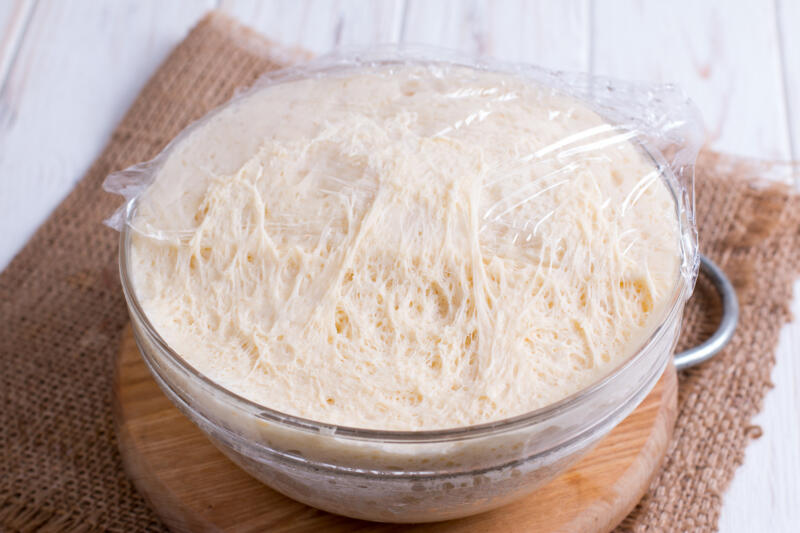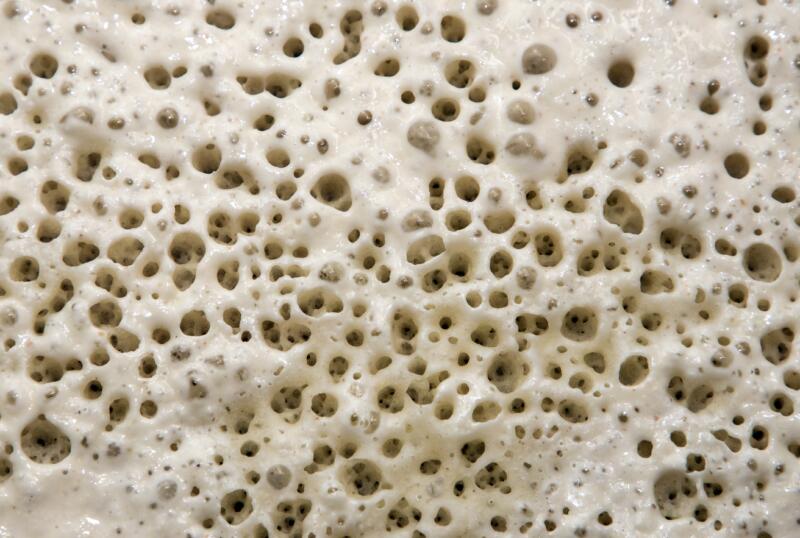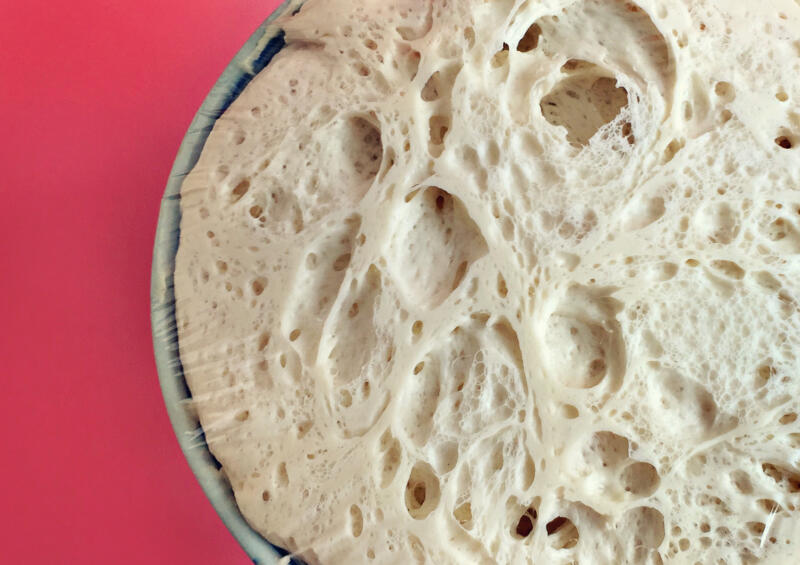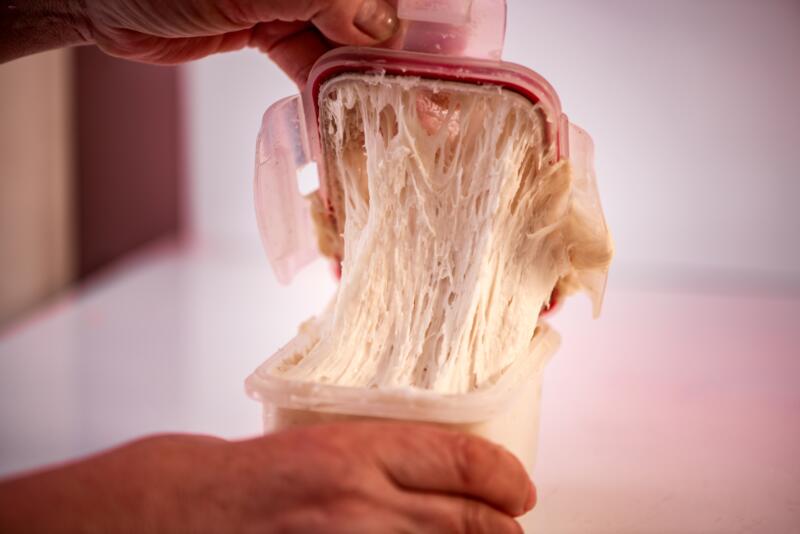Pizza dough, a simple yet essential component of our beloved pizza, is often taken for granted. Yet, as with any food product, it has an expiration date.

There’s nothing quite like the disappointment of opening the fridge, ready to whip up a pizza, only to find that your dough has gone bad.
If you’ve ever wondered, “How to tell if pizza dough is bad?” you’re not alone. It’s a common question among both novice and experienced pizza enthusiasts.
In this article, we’ve explored the factors that contribute to pizza dough going bad, the signs to look out for, and how to properly store your dough to prolong its shelf life.
In this article:
Factors Contributing to Pizza Dough Spoilage
The longevity of pizza dough is influenced by several factors, including the exhaustion of yeast resources, bacterial development, and the quality of the ingredients used.
Yeast, the magical ingredient that makes our dough rise, can exhaust its resources over time.
This exhaustion, coupled with the dough sitting for more than five days in the fridge, can lead to excessive bacterial development.
Dough containing eggs or milk spoils even faster when left at room temperature.
Consuming spoiled dough can lead to unpleasant symptoms and even food poisoning risks. In such conditions, bacteria like Salmonella and E. Coli thrive and pose serious health risks.
Moreover, the quality of the ingredients used in the dough is pivotal in determining its lifespan. Fresh, high-quality ingredients not only enhance the taste but also extend the shelf life of the dough.
Signs that the Dough Has Gone Bad

Recognizing the signs of spoiled dough is crucial to avoid any health risks and to ensure the best pizza experience. Here are some key indicators to look out for:
1. Sour Smell or Taste
A sour smell or taste in pizza dough is a clear sign of over-fermentation. This odor, often resembling alcohol or beer, results from the prolonged fermentation process.
Recognizing and avoiding dough with a sour smell or taste is essential for optimal pizza results.
2. Visible Freezer Crystals on Frozen Dough
If you notice tiny ice particles on the surface of your frozen pizza dough, it’s a clear indicator of freezer burn which occurs when food is not properly sealed before being stored in the freezer.
This lets air access the food, leading to dehydration and oxidation.
If your dough does get freezer-burned, it’s not harmful to eat, but it might not taste as good.
To avoid freezer burn, ensure you keep pizza dough in a tightly sealed container or bag. Aim to expel as much air as you can before sealing the bag.
If you’re planning to store the dough for a long period, you might also consider using a vacuum sealer for the best protection against freezer burn.
If only a small portion of the dough is affected, you can simply cut off the freezer-burned part before using the rest.
3. Harmful Bacteria Present in Raw or Freshly-Made Pizza Dough
Raw or freshly made pizza dough can harbor harmful bacteria, posing risks such as food poisoning.
Specific types of bacteria, such as E. coli, have been linked to contaminated flour, the main ingredient in pizza dough.
It’s essential to handle and store pizza dough correctly to reduce the chances of bacterial contamination.
Always remember to store your dough in a clean, sealed container and refrigerate it promptly.
4. Changes in Texture and Color
Changes in the texture and color of pizza dough can also be signs of spoilage.
If your dough has become too hard or too sticky, or if it’s turning grey or developing dark spots, it’s likely that the dough has gone bad.
Bacterial proliferation or oxidation can cause these alterations, both potentially affecting the flavor and safety of your pizza adversely.
Always inspect your dough carefully before use to ensure the best pizza experience.
Causes of Spoiled Pizza Dough

Understanding the causes of spoiled pizza dough is crucial to prevent waste and ensure the best possible pizza.
Factors such as the fermentation process, air circulation, and storage conditions can significantly impact the quality and longevity of your dough.
1. Cold Fermentation Process for Making Homemade Pizza Dough
The cold fermentation process for making pizza dough involves letting the dough rise slowly in a cold environment, usually the refrigerator, over a period of one to several days.
This extended fermentation method enhances the dough’s flavor complexity.
But if the dough ferments for an extended period or if there’s an overuse of yeast, it can consume all the sugars present, leading to over-fermentation.
Over-fermentation can cause the dough to have a sour, off smell and taste, and it can also negatively affect the texture of the dough, making it slack and sticky.
2. Poor Air Circulation During the Fermentation Process
Proper air circulation is crucial during the fermentation process of pizza dough.
Poor air circulation can affect the fermentation and overall quality of the dough, leading to a dense and less flavorful crust.
The ideal conditions for air circulation include a well-ventilated space with consistent temperature. Inadequate airflow can lead to an uneven rise and potential spoilage of the dough.
3. Improper Storage Conditions
Improper storage conditions, such as fluctuating temperatures and exposure to light, can cause pizza dough to spoil.
Keep the dough in a stable, cool setting, shielded from direct sunlight.
Fluctuating temperatures can disrupt the yeast activity, leading to over-fermentation or under-fermentation.
Similarly, exposure to light can affect the dough’s color and texture.
Storage of Pizza Dough

Proper storage of pizza dough is crucial to maintain its quality and extend its shelf life.
Whether you’re using airtight containers, refrigeration, freezing, or room temperature storage, each method has its own guidelines to ensure the best results.
1. Airtight Containers for Storage
Using airtight containers for storing pizza dough is essential to prevent air from entering the container and drying out the dough.
These containers can range from food-safe containers to original dough boxes.
The key is to ensure a tight seal that keeps air out and moisture in, preserving the dough’s freshness and preventing it from hardening.
2. Refrigeration
Refrigerating pizza dough is a common practice, with recommended storage durations and temperatures varying based on the specific dough recipe.
You should wrap the dough securely or keep it in airtight containers to ward off freezer burn.
Additional steps or precautions, such as allowing the dough to come to room temperature before baking, can further ensure the quality and longevity of the refrigerated dough.
3. Freezing
Freezing pizza dough is a great option for long-term storage. To properly freeze the dough, store it in an airtight container to prevent freezer burn and maintain its freshness.
When you’re ready to use the dough, defrost it properly to ensure the best results.
Defrosting methods can include transferring the dough to the refrigerator or leaving it at room temperature until it’s fully thawed.
4. Room Temperature Storage
Storing pizza dough at room temperature is a delicate balance. Standard pizza dough and Neapolitan-style pizza dough have different recommended time ranges for room temperature storage.
It’s important to store the dough in an airtight container or cover it with plastic wrap to prevent drying.
However, be aware of the risks of overproofing, which can result in dough that’s too airy and difficult to handle. It can also lead to a pizza crust that is overly porous, with large, irregular holes.
To avoid overproofing, it’s important to monitor your dough closely during the proofing process and to use it when it has risen properly but not excessively.
The exact timing can depend on many factors, including the amount of yeast in the dough, the temperature of the dough, and the temperature of the environment.
How to Prolong the Shelf Life of Pizza Dough
Prolonging the shelf life of pizza dough is a combination of using fresh ingredients, maintaining optimal storage conditions, and, if necessary, using preservatives.
Using fresh ingredients is the first step to ensuring a longer shelf life for your pizza dough.
Fresh yeast, flour, and water can make a significant difference in the longevity of your dough.
Optimal storage conditions are also crucial. As discussed earlier, storing your dough in airtight containers, whether at room temperature, in the refrigerator, or in the freezer, can help prevent air exposure and bacterial growth, both of which can lead to spoilage.
Finally, while not always necessary or desirable, preservatives can be used to extend the shelf life of pizza dough.
Ingredients like ascorbic acid, citric acid, and vinegar can help inhibit bacterial growth and maintain the dough’s freshness for a longer period.
However, it’s important to use these sparingly and understand that they may slightly alter the taste of your dough.
By following these tips and techniques, you can enjoy fresh, delicious pizza dough for longer periods, reducing waste and ensuring you’re always ready for a pizza night.
Closing Thoughts
We’ve covered a lot of ground in this article, from understanding the factors that contribute to pizza dough spoilage, to recognizing the signs of bad dough, and finally, how to properly store your dough to extend its shelf life.
Remember, the key to a great pizza starts with fresh, well-handled dough.
Don’t be disheartened if your dough goes bad – it’s a learning process.
Try out the techniques explained in this article and see how they improve your pizza-making experience.
If you have any questions or comments, or if you’d like to share your own experiences with pizza dough, we’d love to hear from you.